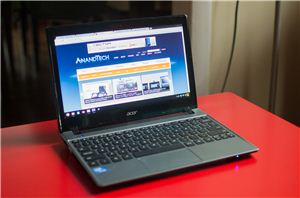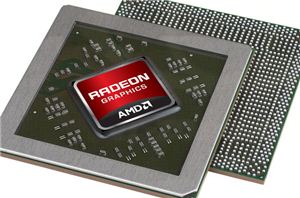Chromebooks have been plagued, until recently, with one major flaw: price. Costing as much as a small Windows notebook but lacking that license, it was hard for users to take the leap of faith that they could live entirely in the browser. Drastically cutting prices while maintaining decent hardware could sweeten consumers on the idea. Hence the Samsung Chromebook costs just $249, and the latest entrant, the Acer C7 Chromebook, rings in at just $199.
The Acer C7 Chromebook is the second collaboration with Acer and Google’s Chrome OS, and though it’s Aspire One roots are plain to see, this is an entirely different beast. Let’s find out how.
Over the years, we’ve seen many budget-oriented Acer offerings of one form or another. There have also been a few higher-end options, but for most of their products Acer has never quite managed to shake their budget-oriented feel. That changes today with one of the sleekest Ultrabooks to grace our test bench since Intel announced the platform two years back.
Acer’s third-generation Ultrabook leaves behind the S3 and S5 models of yesteryear and goes all-in on quality, with a 1080p IPS touch screen, Gorilla Glass 2 on the cover, and a sturdy yet extremely thin chassis that can lay claim to the title of “thinnest Ultrabook” for the time being. With some help from Windows 8, Acer has also managed to improve on boot times and you can be up in running in under 10 seconds flat. With all the good, however, you’re probably wondering if there’s a catch. There is, potentially, but it’s the same old concern we’ve raised before: cost. Read on to find out what we think about Acer’s S7 and whether it’s the right Ultrabook for you.

Microsoft’s Windows 8/RT launch has been a bit choppier than expected. I remember hearing rumors that the OS release could slip into next year, but it seems that the solution to the problem was to launch as devices were ready rather than delay everything. Surface was among the first out of the gate, and I was generally pleased with the tablet, but Microsoft’s partner devices have been slower to release. ASUS held its VivoTab RT launch on the same day as Surface RT, but there were many key absences from the launch week in late October.
Among those missing from launch week were any x86 Windows 8 tablets. Although for most of the year Intel had been quite confident in its Windows 8 tablet story, the fact that I had to secretly borrow one just to get some rough performance numbers in our Surface RT story was a problem.
A little over a month later and things are beginning to change. Contrary to popular belief, driver problems aren’t what kept the first Atom Windows 8 tablets out of the market at launch. A bug (not related to power management) caught several months ago caused schedules to slip by about a month and a half. Depending on whose design the OEM followed (Intel’s or their own), the implementation of the fix could come quickly or would take a bit longer. In this case, Acer and Samsung found themselves on the right side of the fence. We’ve had Atom based Windows 8 tablets from both companies for weeks now.
Vivek is working on our review of the Samsung ATIV Smart PC, while I’ll kick things off with Acer’s Iconia W510. Read on.
We recently reviewed Dell's top of the line Precision M6700 mobile workstation and found that the overall design left something to be desired compared to HP's high end EliteBooks, but that the price was definitely right for the performance. The M6700 is likely to remain a good value for the enterprise sector (much as Dell's desktop workstations continue to be), and the 10-bit PremierColor display uses a similar LG panel to the ones HP employs in their DreamColor displays. Can we get something like that in a smaller form factor, though?
As it turns out, theoretically at least, we can. We have an HP EliteBook 8570w on hand for review, and the 15.6" 1080p DreamColor display threatens to hit the sweet spot for productivity, with a smaller chassis footprint than larger workstations like the M6700 and EliteBook 8760w/8770w. But is the 8570w able to hit the same value propositions as Dell's mobile workstations, can it offer similar performance, or is our memory of the HP EliteBook line a little rosier than reality?




%20Open_575px.jpg)

.jpg)